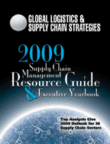
Visit Our Sponsors |
|
|
|
|
|
|
|
|
|
|
|
|
|
|
|
|
|
|
|
|
|
|
|
|
|
|
|
|
|
|
|
|
|
|
|
|
|
|

The current economic crisis only intensifies the ever-increasing levels of uncertainty faced by sourcing professionals along many dimensions: extreme commodity and energy price volatility, mounting supplier failures, recurrent capacity and material shortages or oversupply, the credit shortage. There are concrete actions sourcing practitioners can take.
1) Proactively monitor and manage supplier risk-With the economic downturn and the credit crunch, it is more important than ever to proactively monitor which suppliers are at risk, and have contingency plans and/or alternate suppliers in place. There are technology solutions available that examine a mix of government trade data, credit data, supplier performance, other public information, and data from a company's internal systems to provide early warning of suppliers who might be in trouble.
2) Help key suppliers in "financing" for your orders-With the extreme credit crunch, procurement professionals need to get much more hands-on about helping alleviate some of the cash flow issues of critical suppliers.
3) Acquire deeper commodity market knowledge-In the past year or two, we have witnessed unprecedented commodity price swings of 2X, 3X, even 10X or more within a matter of months. With such volatile prices, it requires keen market intelligence capabilities to make intelligent decisions and react quickly as things change.
4) Private "futures markets". Futures markets provide a window into expected future prices of a commodity. But what about those commodities for which there is not an active futures market? They can experience as much or more volatility than the traded commodities.
5) The need for speed-With markets as volatile as they are-on both the demand and supply sides-speed has become critical. Anyone moving slowly, with long lead-times and long pipelines, will get burned. Speed allows organizations to be more nimble to react to what goes on in the marketplace.
6) Collaborate with suppliers on new cost reduction innovations-Work together with suppliers on how to take cost out. Understand their cost structure-what makes up their price and why the volatility. Look at all the options with suppliers-different ways of payment, different ways of managing the inventory, modifications to product design or delivery.
7) Expand metrics for success, beyond cost-reduction only- Financial metrics, in particular cost savings, are still the overriding metrics for procurement. However there are additional areas, including green/sustainability, quality, safety (e.g., especially in food).
8) Supply-side differentiation-preparing for the recovery-This recession will not go on forever. As we emerge from the recession, we will go back into an extreme sellers market, where shortages and allocation abound. This means suppliers will select who gets limited supply. It is good practice to remember that and build good relationship now.
If you can use the downturn to drive improvements to your risk management, speed, knowledge, and especially your supplier relationships, you will come out of this way ahead of the pack.
The Outlook
Commodity price volatility-both upside and downside-will continue for the foreseeable future. No one knows for sure the length of the recession, but economies such as China and India will continue to grow throughout the downturn, albeit somewhat off their recent double digit growth rates. As we emerge from the recession (and before then for select commodities) expect rapidly rising commodity prices and shortages to return quickly, driven by the ongoing appetites of the emerging economies.
RELATED CONTENT
RELATED VIDEOS
Timely, incisive articles delivered directly to your inbox.

